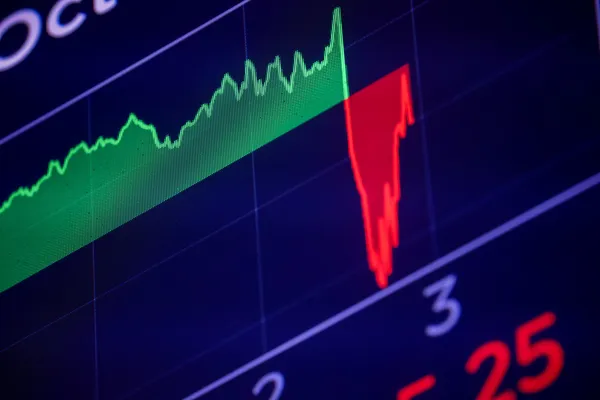
The recent flight to U.S. Treasury bonds, a traditional safe-haven asset in times of financial market volatility, has shown signs of slowing as stock futures pare some declines. This marks a pivotal shift in investor sentiment, which could have serious implications for both retail and institutional investors.
What triggered this transition? A combination of factors played into it, but a key catalyst was the U.S. stock futures market's rebound, which somewhat alleviated investors' fears and reduced their rush towards the relative safety of Treasury bonds. This is a reflection of the dynamism and unpredictability inherent in financial markets.
While it's too early to say whether this is the start of a new trend or merely a temporary pause in the flight to Treasuries, what is clear is that this development has significant implications. For one, it could impact the returns of those who have invested heavily in Treasury bonds, expecting their value to increase as more investors flock to them in search of safety.
For retail investors, particularly those with a conservative investment strategy, this could mean lower-than-expected returns. For institutional investors like pension funds and insurance companies that rely on stable, predictable returns from their Treasury bonds investments, this could lead to potential shortfalls, leading to pressure to find alternative investment opportunities to meet their obligations.
On a broader scale, if this trend continues, it could affect the U.S. government's borrowing costs. Treasury bonds are a key tool for the government to finance its deficit. If demand for these bonds decreases, the government might have to offer higher interest rates to attract buyers, potentially increasing the cost of borrowing.
What does this mean for the average person? If the cost of government borrowing rises, this could potentially translate into higher taxes or cuts in government spending, impacting the average citizen. Additionally, for those with investments tied to the bond market, such as certain types of retirement accounts, a decrease in Treasury bond prices could mean lower returns.
Finally, this development could also have implications for the broader economy. The bond market, particularly the Treasury bond market, is a key barometer of investor sentiment and can often foreshadow economic trends. If the flight to Treasuries is indeed slowing down, it could signal increasing confidence in the economic outlook, potentially leading to increased investment and consumption, and fueling economic growth.
In conclusion, while the slowing flight to Treasuries may seem like a minor shift in the grand scheme of financial markets, its ripple effects can be far-reaching, affecting everything from individual investment returns to government borrowing costs and overall economic activity.

 Next
Next
Comments (0)
Leave a comment